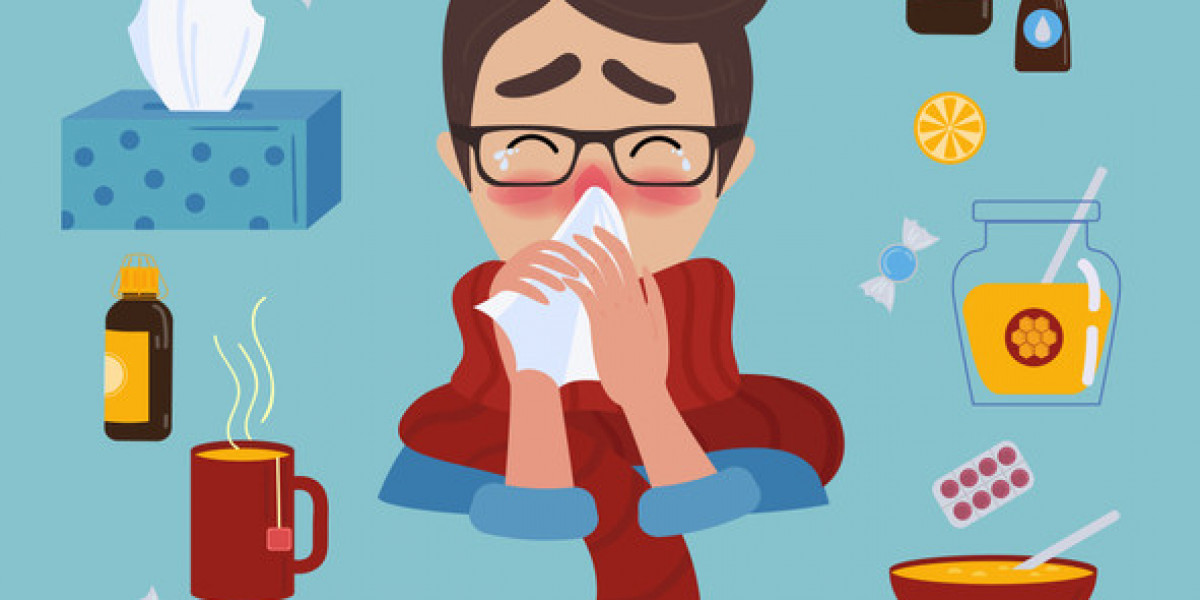Cold and flu are popular respiratory illnesses and are a result of many viruses. They come in the form of distinct symptoms and have different levels of severity. In order to avoid catching the flu or a cold, it is important to know how to prevent such situations and know when it is advisable to see a doctor for stronger meds and some tests.
Common causes of cold and flu
Starting from understanding what causes cold and flu, and why we get these illnesses that result in canceling our plans and breathing from our mouths. The common causes of cold are mostly different viruses, including:
Rhinoviruses, that are the most prevalent cause of colds and are the result of approximately 30-35% of cases. They love cool temperatures and this is why we get them the most during fall and winter.
Adenoviruses, which cause respiratory illnesses, conjunctive, and gastroenteritis. They are not as common as the rhinoviruses but still contribute to getting symptoms of cold.
Coronaviruses, which are seasonal can also become a reason for catching colds. Unlike the deeper strains that we associate with COVID-19, the strains are typically lighter and come with milder respiratory symptoms.
There are also some other viruses, for example, the respiratory syncytial virus (RSV) and parainfluenza viruses that have similar symptoms that we get while getting cold.
When it comes to the flu, is particularly caused by influenza viruses, which are separated into four main types. Here they are:
Influenza A: The majority of seasonal flu outbreaks are caused by this strain, which can infect both people and animals. Hemagglutinin (H) and neuraminidase (N), two surface proteins, are used to further categorize influenza A viruses into subtypes. Humans are susceptible to common subtypes of A(H1N1) and A(H3N2). These viruses are capable of changing frequently, giving rise to novel strains that have the potential to spread like wildfires.
Influenza B: Influenza B viruses, which primarily infect humans, are divided into two lineages: B/Yamagata and B/Victoria. Pandemics are not caused by influenza B, although they do contribute to seasonal epidemics.
Influenza C: This type is not linked to epidemics and typically causes mild respiratory illnesses. Compared to types A and B, it mainly affects children and does not present serious health risks.
Influenza D: This virus primarily affects cattle and is not known to cause serious illness in humans.
In summary, a cold is caused by many different viruses that subsequently lead to mild respiratory symptoms, while symptoms of flu are a result of influenza viruses.
Symptom details: Cold vs flu
While a cold develops over time with initial symptoms being sore throat or stuffy nose, the flu symptoms are more urgent and sudden and appear to express more intensely. When it comes to fever and body aches, influenza often represents a high fever and significant body aches, while the cold doesnt necessarily cause fever above 100F and doesnt have symptoms with severe aches.
The characteristics of flu are associated with a dry cough that sometimes can be more severe, while the cold typically includes a wet cough that comes with mucus. When it comes to fatigue, it is more pronounced during flu and leaves people feeling extremely exhausted for more than one day.
Complications
Although both illnesses can cause discomfort, the flu is more likely to cause serious side effects like pneumonia, particularly in susceptible groups like the elderly or people with underlying medical conditions. In most cases, colds don't cause major health problems.
How these two are treated
There is no specific treatment option for cold, however, there are many ways to ease and fasten the process of healing. Doctors recommend resting, fluids, and also over-the-counter medicine including painkillers and decongestants.
Treatment for the flu focuses on symptom management, just like for colds. However, if high-risk individuals are identified early, antiviral drugs might be prescribed. Hydration and rest are still essential for healing.
Back to square one, lets prevent getting cold or flu
It all starts with good hygiene, which helps to lower the infection in our bodies. Good hygiene firstly includes washing our hands frequently, this is because throughout the day we touch everything that surrounds us, but mostly our smartphones, headphones, and various door handles that we touch. If there is no water due to some circumstances, we can always have sanitizers or wet wipes that will temporarily remove the bacteria that has accumulated on our hands. A helpful tip: while choosing a hand sanitizer, try to pick the one that contains at least 60% alcohol in it.








